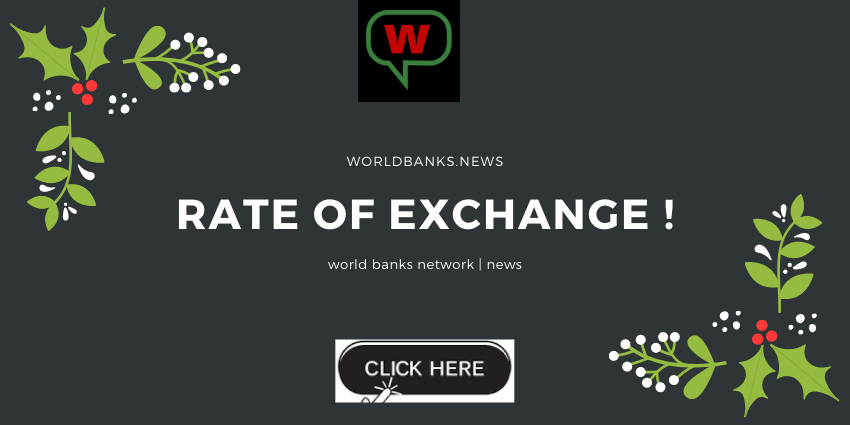RATE OF EXCHANGE
What do you mean by Rate of Exchange? Which are the factors that influence fluctuation of exchange rate?
Ans. Rate of Exchange: Rate of exchange is that rate at which currency of one country converted with the currency of another country.
Factors that influence fluctuation of exchange rate:
a). Commercial factors: The rate of exchange fluctuates with change in demand & supply. One of the important factors influencing the demand & supply of currencies is trade in merchandise export & import.
b). Inflation: Inflation increases the domestic prices of the different commodities which may dwindle export & decrease of export can influence exchange rate.
c). Capital investment: When a country grant loans or makes a gist to another country the currency of the lender country may be used to buy other currencies in foreign exchange market. Such purchase tend to weaken the value of lender countries currency.
d). Short term capital movement: Short term capital is attracted to a centre with a comparatively high rate of interest causing an increased demand for the currency of that country and hence rise in its rate of exchange.
e). Stock exchange transaction: Residents of a country some time buy a foreign currency in order to purchase securities on the stock exchange of that country which may influence the exchange rate.
f). Political factors: A stable Government, healthy economic & political condition induce confidence in the investors & encourage capital inflow into the country. This has effect the strengthening the currency of the country.
g). Speculation: A large scale purchase or sale of foreign exchange by speculators with expectations of full or rise in exchange rates further accelerates the fall or rise.
What do you mean by “leads” & “lags”?
Ans. Leads & lags means changing the time of settlement debts with a view to getting advantage of change in exchange rate. Leads: If it is feared that currency of a country may be devalued, than the importers in the country, who have payments to make in foreign currency, would endeavor/try to obtain that currency quicker than usual.
That is called “Leads”. Lags: In similar circumstances, the exporters in the country who have claims upon foreign importers, would defer/put off selling foreign currencies until after the devaluation. That is called “Lags”.
What do you mean by “par value of the currency”?
Ans. Under the Bretton Woods system, each member countries of IMF was required to declare the initial par vale of its currency either in terms of gold or the US Dollar. This was known as the “par value of the currency”
Write down the different systems to calculate rate of exchange?
Ans. a). Fixed Exchange Rate: Fixed rate of exchange is a system where the rate of exchange between two countries does not vary or varies only within narrow limit.
b). Flexible Exchange Rate: Flexible exchange rate refer to the system at which exchange rate is fixed but is subject to frequent adjustments depending upon the market condition. Thus, it is not a free or floating rate with cent percent flexibility, but is a system providing for adjustments as and when required.
c). Free or Floating Exchange Rate: Free & floating exchange rates means that the value of one currency in terms of another currency is determined on the basis of demand for & supply of foreign exchange in the market. The rates are free to fluctuate according to the changes in the demand and supply forces with no restrictions on buying and selling of foreign currencies in the exchange market.
d). Managed Float: The crawling peg or managed float means that the rate of currency is allowed to fluctuate within a reasonable range as far as possible but the central banks intervenes where market forces cause violent fluctuations, to bring some order in the market. In order to avoid the extreme of a pegging and freely floating rate, the managed float has been innovated.
What do you mean by “Mint price of gold”? When a country is said to be on “gold standard’?
Ans. Mint Price of Gold: The rate at which currency of one country converted into gold is called ‘Mint Price of Gold’. A country is said to be Gold Standard when:
i). When officially a legal gold value has been given to the monetary unit.
ii). It’s currency is freely convertible into gold i.e. it’s monetary authority stands ready to buy or sell gold at a fixed rate.
iii). There is free export & import of gold including export & import for setting international payments.
iv). The total money supply in the country is determined by the quantum of gold available in the country for monetary purposes.
What do you mean by “purchasing power parity theory” ?
Ans. Prof. Gustav Cassel, a Swedish Economist advanced a theory known as “purchasing power parity theory”. According to the theory, the basis for determining the exchange rates between currencies on paper currency standard is their relative purchasing power in the countries in which they circulate.
What do you mean by “Marshall Plan” ?
Ans. After end of 2nd World War, USA joined hands together with war ravaged European nations to rebuild their countries. The US effort to assist the economic recovery is known as ‘Marshall Plan under which US joined with 18 European countries to form Organization for European Economic Cooperation (OEEC). Under the aid package of Marshall Plan the US provided aid to the OEEC partly in the form of food stuff, raw materials and capital equipment from and partly in the form of liquid US Dollar.
What do you mean by ‘SMITHSONIAN AGREEMENT’?
Ans. In an effort to return to the fixed exchange rates relationship among the currencies and to decide the future shape of exchange rate relationship among the major currencies, the Ministers and central Bank governors of ten industrial countries known as Group of Ten (the USA, Canada, Britain, West Germany, France, Italy, Holland, Belgium, Sweden & Japan) met at the Smithsonian Building in Washington on December 17 & 18, 1971 & signed an agreement which is known as ‘Smithsonian Agreement’
What do you mean by “The Snake in the Tunnel” ?
Ans. The “Snake in the tunnel” was a system introduced to interfere with the market forces to maintain stability of the EEC countries. The vivid phrase Snake in the tunnel” refers to the plan adopted under a complicated agreement in March 1972 by the countries included in the European Economic Community (E.E.C) with a view to reducing fluctuations in their currencies. The scheme originated from the plans to extend the European Economic Community into an economic and monetary union.




















